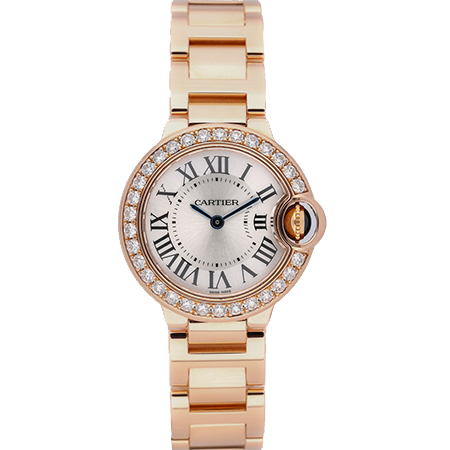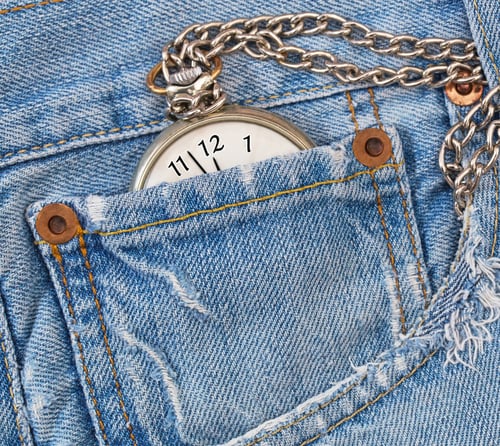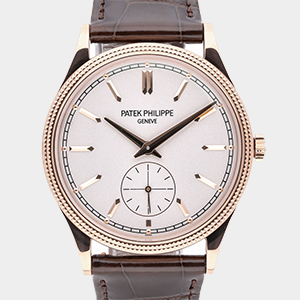Watches have been captivating us for centuries, evolving from simple timekeeping devices into stylish statements for both men and women.
More than just a pretty face, these timepieces are functional marvels that make it easy to keep track of time in our fast-paced lives. If you're diving into the fascinating realm of horology, prepare to be amazed by the hidden depths of these remarkable instruments. With everything from intricate complications to cutting-edge designs, watches embody a blend of precision, artistry, and innovation that’s truly impressive.
In this blog post, we’re excited to share a few mind-blowing facts about watches that will expand your appreciation for these extraordinary creations! Whether you're a seasoned collector or a curious newbie, there's something here that’s bound to intrigue you.

During the time when pocket watches were all the rage, wristwatches were virtually unheard of. Historical records reveal that men relied on pocket watches for their timekeeping needs until the onset of World War I, while wristwatches were mainly designed for women.
These delicate timepieces were often worn as fashion accessories rather than practical tools. However, as the war progressed, the practicality of wristwatches became increasingly apparent. Soldiers found them much more convenient for keeping track of time in the heat of battle, leading to a newfound appreciation among men for this style of watch. After the war, this shift became more pronounced, and men began to adopt wristwatches as essential accessories in their everyday lives.
This marked a significant turning point in the history of horology, as wristwatches evolved from niche items to mainstream essentials that continue to hold cultural and functional significance today, blending style with practicality in one elegant package.
The invention of watches can be traced back as early to the 15th century, when they were initially crafted with only an hour hand for measuring time. This simple design served its purpose for many years, but a significant leap forward occurred in the 17th century with the introduction of the minute hand, enhancing precision and allowing for more accurate timekeeping.
This innovation sparked a competitive spirit among watchmakers, who began to focus on creating increasingly compact and portable timepieces. As the demand for more functional and stylish watches grew, manufacturers experimented with new designs and technologies.
This era of innovation not only transformed the watch industry but also changed how society viewed timekeeping, making watches an essential accessory for everyday life.
Jeans, as we recognize them today, have their origins as durable work pants designed for American cowboys, miners, factory workers, and others in the latter decades of the 1800s. Initially, these sturdy trousers featured only four pockets, but intriguingly, the oldest pair in Levi’s archive, dating back to 1879, includes a distinctive fifth pocket.
This pocket, commonly referred to as a "fob pocket," was not just an aesthetic addition; it served a practical purpose.
In an era when pocket watches were essential tools for timekeeping, the fob pocket provided a secure and convenient place to store these valuable items.

Where did the word 'watch' come from? One theory suggests that the term "watch" is derived from the Old English word woecce, meaning "watchman," since town watchmen utilized these devices to monitor their work shifts. This connection emphasizes the practical origins of the timepiece, which was crucial for maintaining order during nighttime patrols.
Another explanation attributes the name to 17th-century sailors, who relied on early watches to measure the duration of their shipboard watches, or duty shifts. In both cases, the development of portable timepieces marked a significant shift in how people kept track of time during their daily lives.

Subliminal messaging is a key element in marketing, especially in the world of watches.
When watches are displayed in stores, they’re usually set to show the time at 10:10 or 2:50, a positioning often referred to as "Happy Time." In these configurations, the watch hands form a smiling face, creating a cheerful and inviting visual. This clever design choice isn’t just for aesthetics; it subtly boosts the customer’s mood, making them feel more positive and open to making a purchase.
By enhancing the shopping experience in this way, retailers can create a warm atmosphere that encourages sales. The idea is to make customers feel good while they browse, which can significantly influence their buying decisions.
So we managed to sneak an extra one in. Speedy Tuesday refers to a special community-driven movement and series of limited-edition Omega Speedmaster watches created to celebrate the iconic Omega Speedmaster and its fanbase. The movement started as a hashtag on social media and has since evolved into a significant cultural moment within the world of watch enthusiasts.
At BQ Watches, we proudly offer a meticulously curated collection of sport watches, everyday watches and dress watches. Feel free to browse our extensive collection below. For those who prefer a personal touch, we invite you to visit our luxurious showroom, where you can explore our selection up close and receive expert guidance from our knowledgeable staff.
BQ Watches has a vast inventory of pre-owned luxury watches, and we’re ready to help you find your ideal timepiece. If you don’t see the watch you want in our current inventory, be sure to let our team know. We have comprehensive sourcing services to help you find your dream watch. Get in touch with the team at BQ Watches today to talk watches!